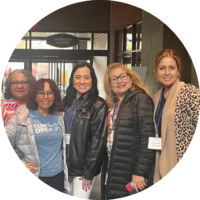
Community Support makes our programs possible
Upon the arrival of our twentieth anniversary, we’re both reflecting on the progress of research and programs we’ve invested in over the past two decades and looking ahead to the work yet to be done. Twenty years ago, it was hard to imagine we would not yet be celebrating a cure. Finding a cure for Parkinson’s remains the ultimate shared goal in our community. However, our educational mission, community connection, and inspiration to help people today are as pressing as ever.
At the Davis Phinney Foundation, we believe that by focusing on the individual—to meet each person where they are in their journey with Parkinson’s—is how we provide the essential support to live well today.
In that spirit, we invite you today to support our mission and make a gift to our spring campaign.

“Shortly after I was diagnosed, I learned about a Davis Phinney Foundation event. I attended with my family to learn how to take care of myself. It was fabulous! It armed me with knowledge, assuaged many of my fears, and gave me hope for a future.”

Research Timeline
For more than a decade, we have supported innovative research, often investing in early-stage research ideas that have grown and made a meaningful impact on how people live with Parkinson’s. Learn more by scrolling down and clicking on a study to read about it.
You can help make groundbreaking research like this happen. Contribute to our research fund to help us continue making discoveries that improve the lives of people living with Parkinson’s.
Make Your Gift Today
Join the thousands of donors who help make our work a reality each year.
Make your secure donation online or call us at 1-866-358-0285.
Learn about the increased tax incentives for charitable giving when you make a gift of stock or a qualified charitable distribution from your IRA here.

